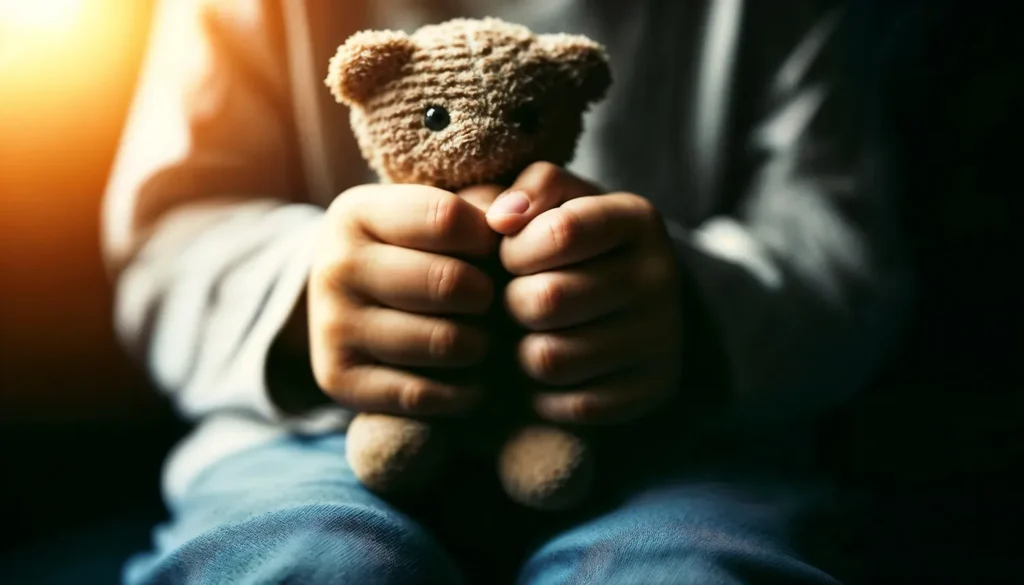Executive Director of the Family Systems Institute, Lauren Errington, spoke at the July 2024 Spotlight Session on ‘Social Anxiety’. The two parts of this article summarise key aspects of her presentation.
You can learn more about Spotlight Sessions and events we have coming up, here.
Read Social Anxiety Part 2 to discover what helps care for someone with social anxiety, and what churches can do to increase their support and thoughtfulness.
Anxiety is the most common mental health challenge in our community. Just social anxiety, as a subgroup, affects more than 1 in 10 Australians. And while it’s possible to think about anxiety and come away feeling guilt – it’s important to put it in the context of a God who meets us in our distress with kindness.
“When anxiety was great within me, your consolation brought me joy.”
Psalm 94:18-19
Lauren began her presentation by describing what her Sunday pre-church routine looked like: after breakfast, getting dressed, wondering if X is back from holidays and when her small group is next on the morning tea roster, herding her children into church, having a brief chat with the welcomers at the door, getting seated and saying hello to the person in the next row, then waiting for church to start.
By contrast, here’s what Sunday before church looked like for someone with social anxiety, as described to Lauren: ‘It’s Sunday. How long until I have to leave? Is there a good reason for me not to go? Probably not. Lord, please give me energy to get to church this morning. How can I even go to church when I feel like this? Surely no one will even notice if I’m not there. It would be so easy not to go.’ Then, once she arrived at church: ‘I don’t want to walk in by myself. How embarrassing. Do the welcomers like me? Do they think I’m boring? They sound like they’re happier to see other people. I should sit close to the door.’
The lives of those with social anxiety are made up of days and weeks of hours just like this.
The aim in the seminar was to ‘thicken our understanding and description of social anxiety and the Christian life’. As noted by Professor John Swinton, ‘thin’ descriptions simplify the complex and unique nature of mental health challenges. To seek a ‘thicker understanding’ is to recognise that there is no single experience of social anxiety, just as there is no single solution or hack that will make it easier for people.
With this in mind, Lauren talked about social anxiety under three main headings:
– Thickening our scientific understanding of social anxiety
– Thickening our Christian understanding of anxiety
– Getting more thoughtful about caring for those with social anxiety
Our scientific understanding of social anxiety
What anxiety does in the body
Part of understanding anxiety is being aware of how we function as God’s creatures – and knowing what happens in the body when we become anxious.
Anxiety performs a key function in our survival as a species. It’s part of our biological wiring: a warning signal that ‘something is not okay’. When we sense a ‘threat’, our brain responds by sending messages to the body to help it respond.
This is what we call the Fight, Flight or Freeze response. When the body perceives potential danger, things like blood pressure and heart rate rise to help engage the threat. The body isn’t designed to stay in that condition. But to return to a calmer state often takes time and energy, and sometimes doesn’t happen without the body feeling overwhelmed.
It’s important to recognise that it’s almost impossible to think clearly and logically when we’re not in a calm state. When the body is anxious, the front part of the brain (the pre-frontal cortex) responsible for thinking and decision-making is more closed-off, as the body just wants to deal quickly with the threat at hand. Simply telling someone to think differently when in a highly anxious state won’t work.

What social anxiety is
So, when does regular bodily anxiety – as a normal human response – become clinical social anxiety?
In answering this question, it’s important to understand that the body can have the same anxious response to an imagined threat as it does to a real threat. So, in a situation where someone feels like they’re being made fun of, or ignored, or misunderstood, even if that’s not the actual situation, it can trigger the same anxious response.
And to compound it, the more anxious the brain gets, the less it is able to tell the difference between ‘real threat’ and ‘perceived threat.’ If you look at the description of the anxious church friend in the introduction, you can see the range of perceived threats running through her mind:
– Does anyone notice me?
– It’s so lonely walking in by myself
– Does the welcomer like me?
– Do they think I’m boring?
– I need to sit by the door.
All of us experience anxiety, and sometimes in response to perceived rather than real threats. But clinical anxiety is significantly more pronounced – it is repeated, persistent and impairs functioning in relationships and activities.
Here’s an extended definition of social anxiety: ‘the fear of being judged and evaluated negatively by other people, leading to feelings of inadequacy, inferiority, self-consciousness, embarrassment, humiliation, and depression. People with social anxiety disorder usually experience significant emotional distress in the following situations: being introduced to other people; being teased or criticized; being the center of attention; being watched while doing something; meeting people in authority; most social encounters, especially with strangers; going around the room (or table) in a circle and having to say something; interpersonal relationships.’[1]
Now, let’s think about church, a gathering of ordinary people chosen by God. For those with social anxiety, participating in church means being involved in lots of social situations.
In fact, if we pulled out some characteristics of the above definition, and consider some of the regular aspects of church life, it might look something like this:
General situations of social anxiety | Church situations related to social anxiety |
Being introduced to other people | ‘Can you come and meet these people who are new to church this evening?’ |
Being teased or criticized | Worry about contributing aloud to a discussion |
Being watched while doing something | Asked to do something up front at church |
Unstructured social spaces | Morning tea / supper at church |
Going around the room (or table) in a circle and having to say something | Small groups at church (e.g. prayer meeting / bible study) |
Engaging with people socially | Talking to people at church |
It is important to say that everyone’s experience of social anxiety is different. Not everyone will experience all these situations as anxiety-provoking. And some might experience other situations not on the list. This is part of ‘thickening’ our description: being able to hold onto the idea that social anxiety – and anxiety more generally – is complex, and each person’s experience will be different.
So, what does social anxiety look like? Here are some possible signs that someone might be experiencing social anxiety at church:
– Physical symptoms such as blushing, sweating, trembling or having a shaky voice, avoiding eye contact
– Avoidance of doing things or speaking to people
– Avoidance of situations where you might be the center of attention or called on to contribute
– Arriving to church late and leaving early
– Frequently absent from church or late withdrawal from events
– Taking jobs / roles on at church (even up-front roles) but avoiding social spaces
– Being self-deprecating and/or overly critical of others (in person or on social media)
What you might notice is that it can be very hard to tell if someone is socially anxious! Just because someone is ‘up the front’ doesn’t mean they’re not anxious. (And, in fact, many leading comedians are socially anxious.)
The risk of over-pathologising anxiety
If we’re not thoughtful about how we talk about anxiety, it can undermine the experience of those who do experience higher levels of anxiety.
As mentioned above, anxiety is part of being human in this world. Everyone is anxious at some point in their lives, and it serves a useful function for us. We need to have space for things to be uncomfortable, at times, in our lives and our relationships. Otherwise, we can overcomplicate or over-medicalise very normal human feelings of being sad, worried, angry, grieving, etc.
The risk is that we might expect our lives to be free from discomfort. But this is never what the Bible promises, nor what Jesus experienced. If anything, it is part of the lies the world tells us that we should be endlessly happy and without distress.
The other problem is that while it is a positive thing that there is now more awareness and less stigma attached to mental health treatment, this familiarity can cause our descriptions to become thin. So, for example, someone might describe their experience of social anxiety, and someone else might reply ‘Oh yes, I used to be worried about meeting new people too.’
This is why it’s important to have thick descriptions, and to listen to what a person’s diagnosis might have involved, their lived experiences and struggles and journey, instead of making assumptions about what it should or shouldn’t look like.
Treatment for anxiety
In terms of professional care, Lauren listed these ways of approaching treatment for social anxiety
Psychoeducation – one of the keys to managing anxiety is knowing what it looks and feels like, and understanding what is happening in the brain and your body. This knowledge can help interrupt that spiral of being anxious about becoming more anxious, and free up some energy to make decisions.
Emotional regulation – if you can regulate emotional reactivity, you can calm the body and nervous system down, which can also help to escape the anxious cycle. This includes practices like breathing regulation (which increases oxygen, and sends messages to the brain to calm down), and grounding techniques (which draw on the senses to help the brain to be present).
Counselling – including cognitive behaviour therapy (CBT), dialectical behaviour therapy (DBT), acceptance and commitment therapy (ACT), each of which can help someone understand what is happening when social anxiety is triggered and strategies to manage it.
Family Systems approach – a family systems lens on social anxiety would involve working with the person to consider how sensitivities in relationships, such as to attention, or lack of attention; approval, or worry about disapproval; expectations of self and others; and a heightened sensitivity to distress in themselves or others, might have been shaped by their family relational experiences and the broader multigenerational relational system.
Exposure therapy – is a guided approach that slowly increases someone’s exposure to potentially anxious situations, in order to help them practice their strategies and awareness.
Baseline care – as with any mental health challenge, it is important to think and monitor bodily factors like sleep quality and quantity, nutrition, social contact, and being active and outdoors.
Medication – can be part of anxiety treatment if necessary, but it is always recommended to be in conjunction with counselling or other psychological support.
If you’re reading this and think you need support, please reach out to someone you trust, whether that is someone trusted at church, a friend or family member, your GP, or a one-off session with a counsellor to explore options and ask questions.
Read Social Anxiety Part 2, which summarises Lauren’s presentation on a Christian understanding of anxiety and how to helpfully care for those experiencing social anxiety.




